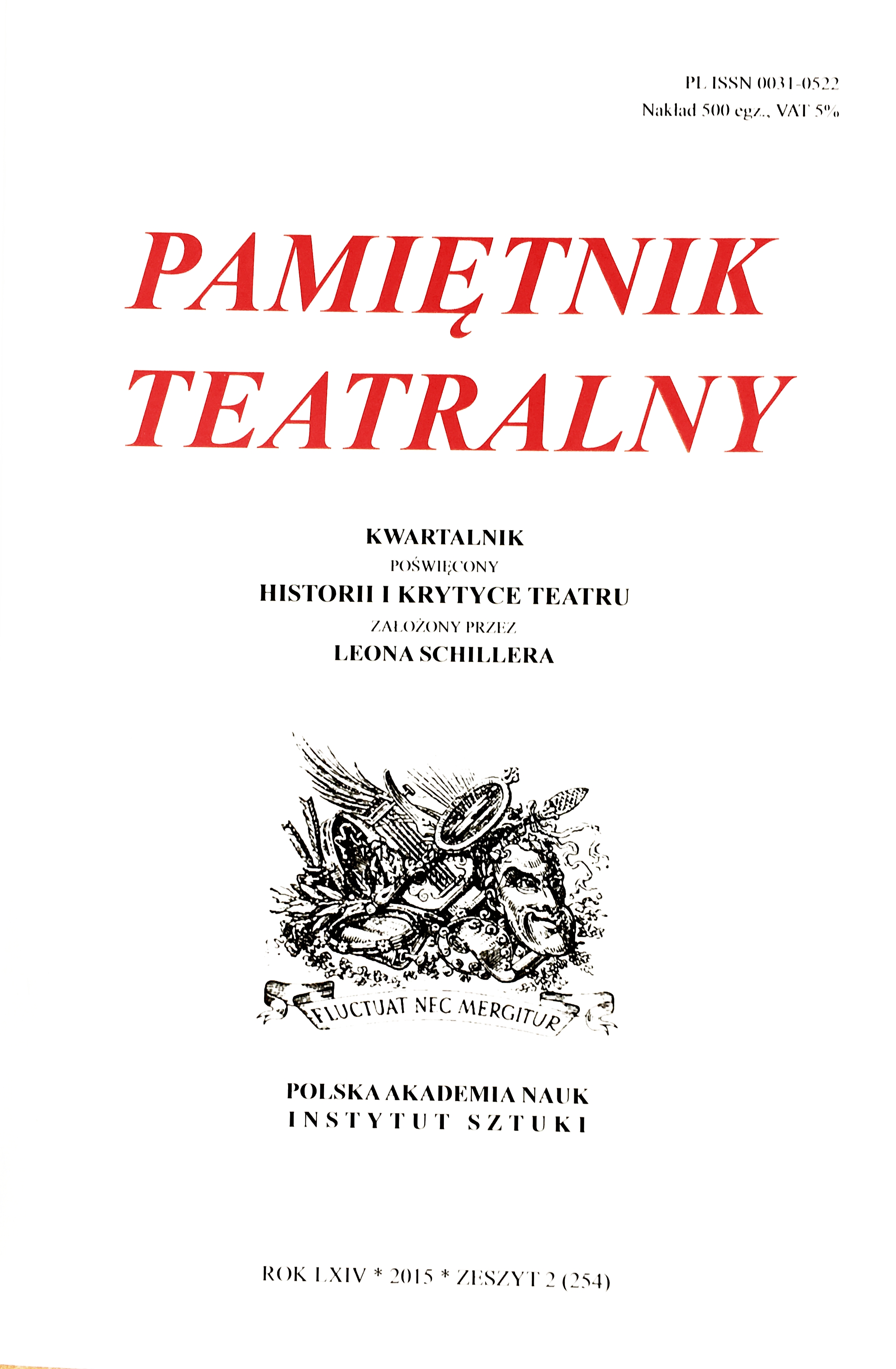W kręgu awangardy
In an Avant-garde Circle
Tadeusz Kantor Was Not Alone
Author(s): Agnieszka Koecher-HenselSubject(s): Theatre, Dance, Performing Arts
Published by: Instytut Sztuki Polskiej Akademii Nauk
Keywords: Tadeusz Kantor;avant-garde art;Cricot Theatre;
Summary/Abstract: Tadeusz Kantor’s is not the only name to be associated with development of the idea of autonomous theatre; there were other artists who inspired and supported him, and contributed substantially to the creation of the new face of Polish theatre in the 20th century. Most of them worked at professional repertory theatres. At the time when Kantor studied at the academy of art, the centre of avant-garde endeavours in Cracow was the Cricot Artists’ Theatre set up by painter Józef Jarema, which was active in 1933–1939. It grouped artists averse to naturalism and psychologism in theatre; most of them were visual artists, but other members of the company included actors, directors, musicians and versatile artists as well. Józef Jarema drew into the artistic enterprise nearly all of his family – not only his sister Maria, but also his brother Władysław, who, along with his wife Zofia, set up the Groteska Puppet-and-Actor Theatre in Cracow in 1945, thus continuing the search for a theatre that would unite visual art, spoken word, music, and dance. A strong group of stage designers from Kantor’s underground Niezależny Theatre, active in 1942–1944, joined the Groteska theatre; they were Kazimierz Mikulski, Jerzy Skarżyński, Ali Bunsch, and Andrzej Cybulski. Mikulski remained with the Groteska theatre for the rest of his life while working at the Cricot 2 theatre not only as a scenario author, but also as a director and actor. Cricot’s goal was theatralisation of theatre. The visual aspect, spanning the modern mask, costume, new gesture, movement and situation arrangement, played a key role in their performances. It was the place where famous Polish premieres of Śmierć Fauna by Tytus Czyżewski (The Death of a Faun) and Mątwa (Cuttlefish) by Stanisław Ingacy Witkiewicz were put on. The production authored by Henryk Wiciński, Trójkąt i koło (Triangle and Circle, 1939) was the most innovative of their performances as far as form is concerned; it was inspired by constructivist experiments, mostly those of Bauhaus artists. Kantor drew inspiration from the same source when he was producing The Death of Tintagiles by Maeterlinck at the Ephemeral (and Mechanical) Marionette Theatre in 1938. Artists from the company, Jerzy Zitzman and Zenobiusz Zwolski, set up the Banialuka Puppet Theatre in 1947, still active in Bielsko-Biała, which, along with the Groteska theatre, has been one of the most important centres of puppetry in post-war Poland.At the Cricot Theatre, the most interesting, albeit forgotten, individuality was Henryk Wiciński. He was persistent in his struggle to realise the idea of visual theatre in which all elements of the show, i.e. decorations, costume, movement, and spoken word, would play an equally important part in the performance. A few years younger than Józef Jarema, Wiciński belonged to the second wave of the Cracow avant-garde, to a certain extent opposed to its earlier Formist and Futurist tenets. He died in 1943, when Kantor, along with other young artists, continued his experiments at the Niezależny Theatre. In 1932 Wiciński was a co-founder of Grupa Krakowska (the Cracow Group). In 1957 his friends, Maria Jarema, Jonasz Stern and Adam Marczyński along with Kantor and the painters from the Niezależny Theatre formed the Grupa Krakowska 2 Society, which continued to promote the ideas of its namesake and predecessor. One of its major goals was to support the Cricot 2 Theatre.
Journal: Pamiętnik Teatralny
- Issue Year: 254/2015
- Issue No: 2
- Page Range: 14-36
- Page Count: 23
- Language: Polish

